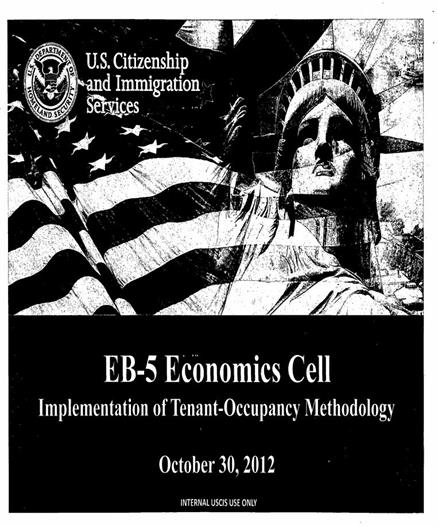IIUSA recently received the following USCIS training document relating to the issue of “tenant occupancy” methodology of establishing job creation in EB-5 cases. For those unfamiliar with this topic, tenant occupancy refers to projected job creation attributed to prospective tenants who would occupy commercial space created with EB-5 capital. It became a particularly acute policy issue in early 2012 and continues to be a standard in USCIS’ adjudication lexicon. IIUSA obtained these materials to better inform the industry on how USCIS is implementing its policy interpretation – and hope you find the document useful in your interactions with USCIS.
To briefly summarize, USCIS maintains that the investor must provide evidence that these jobs are newly created rather than merely re-located positions. The USCIS training manual states that “if applicants provide a cogent argument supported by reasonable and verifiable evidence that benefits generated by a commercial space development /renovation project financed by EB-5 capital will be a significant factor in the decision of a business to start operations and located in the specific commercial space, then USCIS will allow the EB-5 investment group to take credit for the employees of the tenant”. It is the burden of the investor to prove that the tenant jobs would not have been created but for the construction or renovation of the commercial space.
In the training materials, USCIS defined some core analytical guidelines for investors to effectively implement tenant occupancy job creation methodology. These guidelines include: analysis of the projected interaction of local commercial space and product markets, providing incentives to tenant start-ups, and detailing start-up job estimation methods and metrics. Investors may claim job creation credit through tenant occupancy if they are able to use verifiable data sources (such as capital-labor ratios, production functions, revenue per employee, and sales per square feet) to accomplish the following:
- demonstrate a high probability that the supply of a specific type of new or renovated commercial space will cause new businesses to start/expand operations that were otherwise constrained
- that the supply of the new commercial space is shown to generate economic benefits which factor significantly into the decision calculus of the new tenant business, such as removal of market-based constraints or increasing cost-savings
- prove that incentives such as rent subsidies, energy and utility incentives, maintenance and operational costs, and tax subsidies, were provided to entice tenants to startup in the new commercial space
- utilize tenant industry specificity to develop a reasonable tenant job forecast, which takes into account both direct and indirect job creation. Metrics used to forecast projected job creation vary widely across industries, thus industry specific job forecasting methods are required.
IIUSA is following tenant occupancy issues closely and will keep our members up to date with further developments and analysis of these training materials.
CLICK HERE TO VIEW THE USCIS TENANT OCCUPANCY TRAINING DOCUMENT








